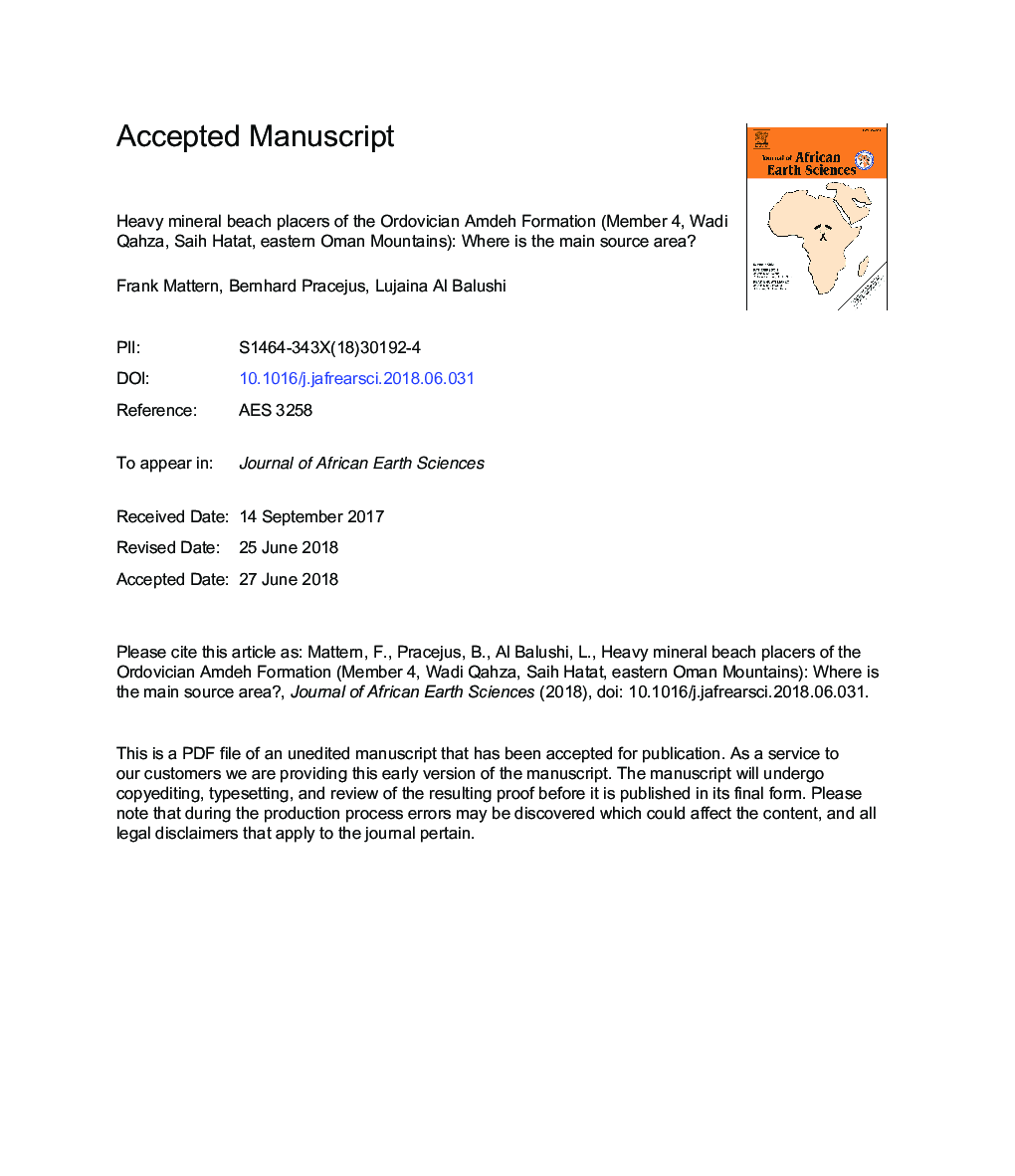| کد مقاله | کد نشریه | سال انتشار | مقاله انگلیسی | نسخه تمام متن |
|---|---|---|---|---|
| 8913414 | 1640162 | 2018 | 44 صفحه PDF | دانلود رایگان |
عنوان انگلیسی مقاله ISI
Heavy mineral beach placers of the Ordovician Amdeh Formation (Member 4, Wadi Qahza, Saih Hatat, eastern Oman Mountains): Where is the main source area?
ترجمه فارسی عنوان
جلبک های معدنی سنگین سازند اردوی ارودیکی (عضو 4، ودی قهزا، سایحات، کوه های شرقی عمان): منطقه منبع اصلی کجاست؟
دانلود مقاله + سفارش ترجمه
دانلود مقاله ISI انگلیسی
رایگان برای ایرانیان
کلمات کلیدی
موضوعات مرتبط
مهندسی و علوم پایه
علوم زمین و سیارات
زمین شناسی
چکیده انگلیسی
We studied an excellently exposed section of the slightly metamorphic siliciclastic Amdeh Formation. The section is near the base of the Amdeh Member 4 (Am4). Am4 is of Early to Mid-Ordovician age and 1677â¯m thick. Two lensoid placers were examined for their mineral composition (X-ray diffraction, transmitted and reflected light microscopy), geochemistry (X-ray fluorescence), in-situ gamma-ray emissions and the sedimentary structures of the host rocks. The placers were deposited in a beach environment as indicated by sedimentary structures in the associated quartzites, such as parallel lamination, parting lineations and sand volcanoes and as indicated by the compositional and textural maturity of the host rock and the placers. Placer deposition may have been favored by rising sea-levels. Overall, the dark placers contain the following heavy minerals: anatase (up to 35-40%)â¯>â¯ilmeniteâ¯>â¯zirconâ¯>â¯hematite (a few %)â¯>â¯and apatite (<1%, may be present in trace amounts as indicated by low phosphorous contents in XRF analysis). The presence of monazite is indicated in our study by LREEs plus yttrium. Due to the high amounts of ilmenite and anatase, the placers' titanium contents are high (up to 20.5â¯wt%). In both placers, the concentrations of the light rare earth elements (LREEs) lanthanum, cerium, praseodymium and neodymium plus yttrium (geochemically affine to HREEs) are noteworthy (between â¼3000 and 7000â¯ppm). The source rocks can be expected in metamorphic and acidic plutonic rocks in the basement of Oman, which may have shed detritus from exposed basin flanks, but other potential source areas lay to the north and south of the basin. A source area with pre-enriched quartz in sandstone to explain the massive quartz influx would also be possible. The coastal/shallow shelf facies of Am4 shows very little bathymetric variability despite its thickness, which requires rapid and continuous subsidence. We attribute basin subsidence to rifting, withdrawal (and subrosion?) of salt in the subsurface (Ara Formation) due to sediment loading and possibly to gravity-driven subsidence due to the presence of dense ophiolite units below the Ara Salt. The absence of the Amdeh Formation in the west (Jabal Akhdar Dome) may be explained by rift shoulder uplift. While the Amdeh Formation accumulated in the rift basin, the Jabal Akhdar region occupied parts of the northwestern rift shoulder.
ناشر
Database: Elsevier - ScienceDirect (ساینس دایرکت)
Journal: Journal of African Earth Sciences - Volume 147, November 2018, Pages 633-646
Journal: Journal of African Earth Sciences - Volume 147, November 2018, Pages 633-646
نویسندگان
Frank Mattern, Bernhard Pracejus, Lujaina Al Balushi,
